
The Roman Empire spread its ideas and culture across Europe. The Italian city-states led the way again during the Renaissance. These iconic surroundings made Italy a star of the silver screen. Its jet-setting people, cosmopolitan cities, ravishing landscapes, and romantic towns are the same reasons why everyone wants to visit. Go there for the art, architecture, history, and gastronomy. Piazza or pizza? Either way, let your stomach guide the way. Also, when in Rome, visit Vatican City, a micro-state long entangled in the affairs of Italy.
Must Sees: Venice | Must Sees: Rome | Must Sees: Florence | Must Sees: Pisa | Must Sees: Assisi | Food
MUST SEES: VENICE
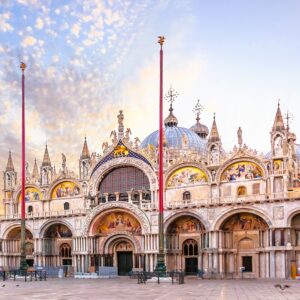
St. Mark’s Basilica
The basilica houses St. Mark’s corpse, smuggled from Egypt in a pork barrel. Multicolor marble columns looted from Constantinople adorn the façade. Pillaged bronze horses trot above the entrance. Superb gold mosaics cover the surfaces of the Byzantine-Gothic basilica.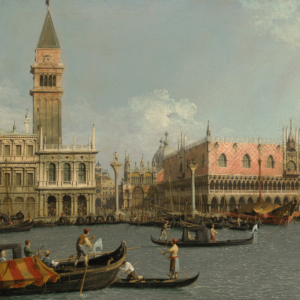
Piazza San Marco
From the Grand Canal, you first notice the pink marble Doge’s Palace and the tall bell tower. A pair of columns frames the entrance, St. Theodore standing on a crocodile and the winged lion of St. Mark. The grand plaza has covered arcades with restaurants and cafés.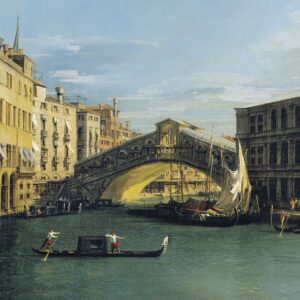
Ponte de Rialto
Antonio da Ponte built the magnificent stone Ponte de Rialto. With the surname Ponte, he was born to build bridges. Rialto Bridge is the grandest of the bridges linking Venice’s 118 islands. The City of Bridge’s arched bridge spans the Grand Canal with a portico and carvings of patron saints.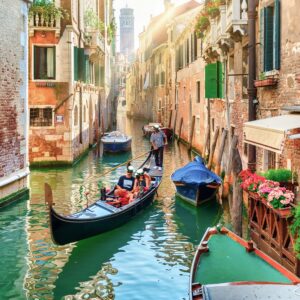
Gondola Ride
Discover Venice’s beauty through a gondola ride. In the past, these long Venetian rowing boats were the only way to travel. Experience the romance of gliding through the canals at night when the city is illuminated.
Murano
In 1291, glassmaking moved to Murano as the furnaces were fire hazards to wooden homes. From this secluded enclave, artisans perfected the craft of glassmaking. Murano glass objects are art pieces with elegant designs and beautiful colors. Visit a workshop to learn more about this ancient tradition.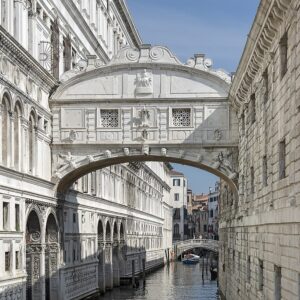
Bridge of Sighs
Ponte dei Sospiri connects the Doge’s Palace to the prison. The enclosed white limestone bridge has windows with stone bars. Lord Byron came up with this nickname for condemned prisoners who sighed at their final view of Venice’s beauty.
MUST SEES: ROME
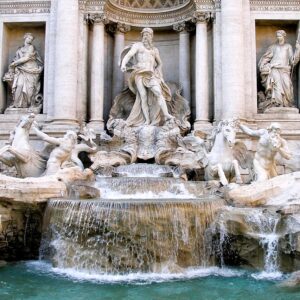
Trevi Fountain
With the Palazzo Poli as a backdrop, Oceanus stands on a shell chariot pulled by hippocamps and tritons. In an iconic scene in the masterpiece, “La Dolce Vita,” Anita Ekberg wades through the Baroque fountain. If you throw a coin behind your back into the fountain, you will one day return to the Eternal City.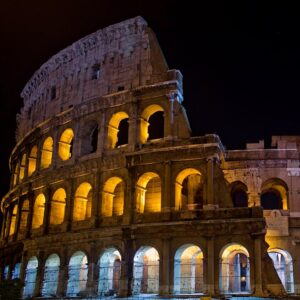
Colosseum
Emperors offered electrifying spectacles for bloodthirsty masses. Gladiators battled to the death. Wild beasts attacked prisoners. Naval battles flooded the Colosseum. The elliptical arena’s wooden floor is gone, and you can now see the underground tunnels and cages.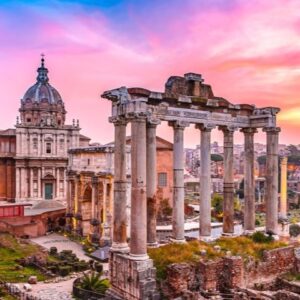
Roman Forum
Between the Palatine and Capitoline Hills, the Roman Forum was a monumental plaza buzzing with activity. Public speeches were held under triumphal arches. Gold was shuffled into treasuries and an eternal flame was lit at the Temple of Vesta.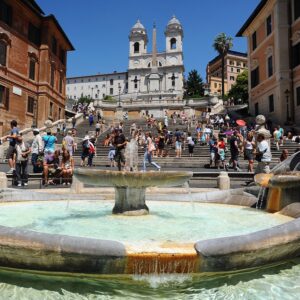
Spanish Steps
The Spanish Steps is the ideal place for people watching. The travertine steps connect the Spanish Plaza at the bottom with the Piazza Trinità dei Monti on top. At the base of the stairs, Audrey Hepburn and Gregory Peck started their day of fun in “Roman Holiday.”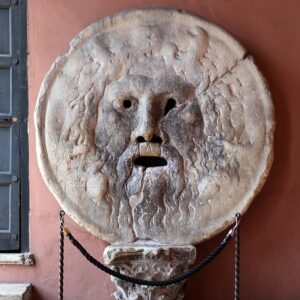
Mouth of Truth
The ancient Roman marble mask leans against a wall of Santa Maria in Cosmedin Church. According to legend, it would bite off the hand of anyone who tells a lie. The mask represents the face of Oceanus. In “Roman Holiday,” Hepburn and Peck place their hands in the mouth.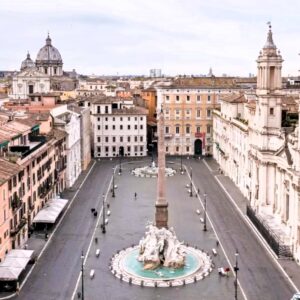
Piazza Navona
The plaza was built on the former Stadium of Domitian site, giving it an oval shape. Pope Innocent X commissioned Bernini to design the Fountain of Four Rivers fountain for his palace. Four river gods (the four continents) lounge on travertine rocks with an Egyptian obelisk at the center.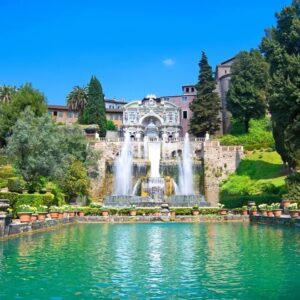
Villa d’Este
In Tivoli, Villa d’Este’s terraced Renaissance gardens showcase spectacular fountains. Neptune’s Fountain has a grotto with cascades and lofty water jets. The Oval Fountain is a waterfall from an egg-shaped basin against a semicircular wall. The Hundred Fountains is a long mossy alley with spouts gushing from masked faces.
MUST SEES: FLORENCE
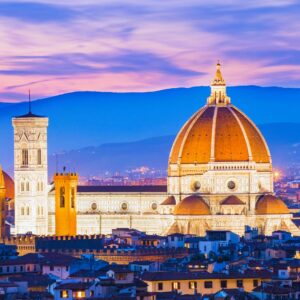
Duomo
Brunelleschi’s octagonal dome is a Renaissance masterpiece of nested shells. An inner shell provides support and the majestic outer shell reaches for the heavens. Climb to the top for gorgeous views. The neo-gothic façade is clad in white, green, and pink marble.
Uffizi Gallery
The Uffizi Gallery contains the greatest collection of Renaissance art. The Medici art collection was bequeathed to the city on the condition that it must never leave Florence. Make a beeline to the Botticelli Room to view the Birth of Venus and Primavera.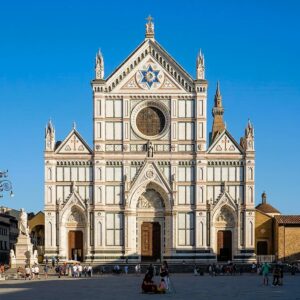
Santa Croce
The Basilica of Santa Croce is the largest Franciscan church in the world. Florentine greats are buried here, including Michelangelo, Galileo, Machiavelli, and Rossini. The neo-Gothic façade for its pink marble and Star of David.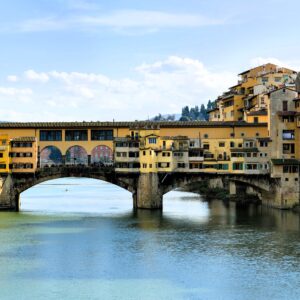
Ponte Vecchio
Florence’s landmark Ponte Vecchio spans the Arno. Cosimo I de’ Medici had Giorgio Vasari build the Vasari Corridor on top of the bridge. This allowed the Grand Dukes to move securely between the Medici’s Pitti Palace and the Palazzo Vecchio government hall.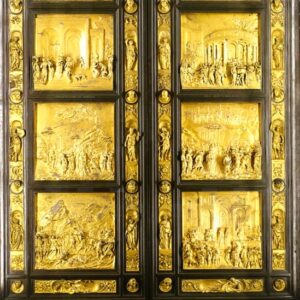
Gates of Paradise
Michelangelo referred to the gilded bronze doors at the Baptistery of the Duomo as the Gates of Paradise. Lorenzo Ghiberti’s east set of doors has ten panels of scenes from the Old Testament.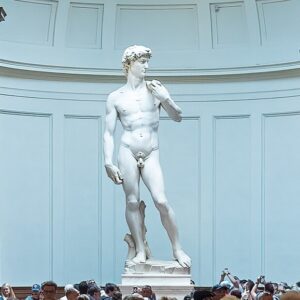
David
See the replica of Michelangelo’s magnum opus at the Piazza della Signoria or the original at Galleria dell’Accademia. Michelangelo said that he was merely revealing the forms that already existed in the massive block of white marble.
MUST SEES: PISA
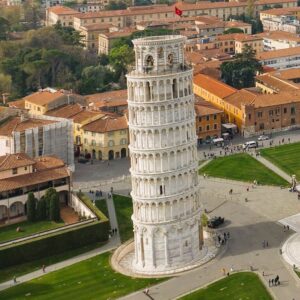
Leaning Tower
The bell tower leans due to its unstable foundation and was already leaning after the second floor was built. Engineers compensated by making one side taller on the upper floors. Galileo dropped weights from the top, showing gravity causes objects of different masses to fall at the same rate.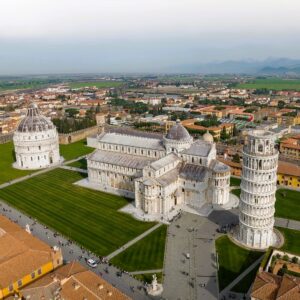
Piazza dei Miracoli
The Square of Miracles has four massive religious structures: Pisa Cathedral, Pisa Baptistery, ‘Monumental Cemetery, and Leaning Tower of Pisa.
MUST SEES: ASSISI
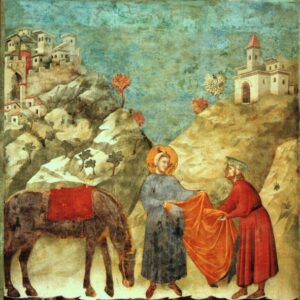
Basilica di San Francesco
Assisi is a gem of an Umbrian hill town. The Romanesque-Gothic church was built on two levels – the Upper Basilica and the Lower Basilica. St. Francis founded the order of the Franciscans. Giotto painted frescoes of the saint’s life with a realism and humanism that sparked the Renaissance.
FOOD
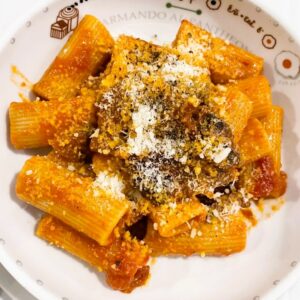
Amatriciana
Pasta all’amatriciana combines salty cured pork cheek (guanciale), sweet tomatoes and onion, pecorino romano cheese, white wine, and black pepper. The thick and jammy sauce infuses immense flavor in the olive oil-coated rigatoni pasta. It’s one of Rome’s four classic pasta dishes.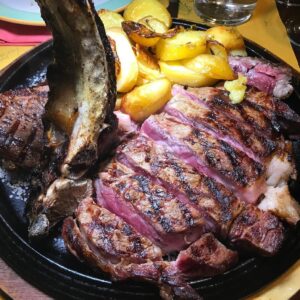
Bistecca alla Fiorentina
The aged Florentine steak is cooked over charcoal and served rare. It’s a porterhouse, with a beefy NY strip on one side of the T-bone and filet mignon on the other. Enjoy the giant, tender, and juicy steak with another person.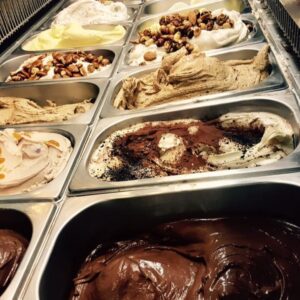
Gelato
Gelato in Italy contains 6–9% butterfat. Seek an artisanal gelateria that emphasizes seasonal fruit options over unnaturally brightly-colored flavors. Also avoid gelato that is piled high. Enjoy a rich scoop that is dense, smooth, and creamy.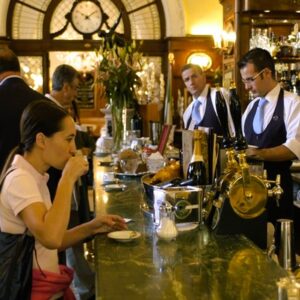
Coffee Bars
Italians enjoy coffee several times throughout the day. This includes an afternoon pick-me-up and a treat after dinner (after dessert). They just don’t drink cappuccinos after 11 am. At coffee bars, order your caffè (espresso shot) at the counter (al banco) and sip it standing up.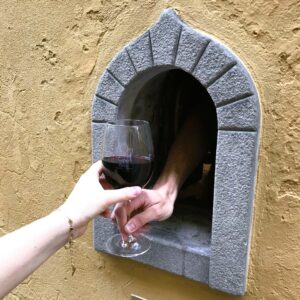
Wine Holes
Buchettes were literal holes in the wall selling wine to go during the Renaissance period. Wealthy merchants in Florence had windows on their palaces to discreetly make their transactions. With wine holes popping up all over Florence, knock on the door for a glass while you’re on the move.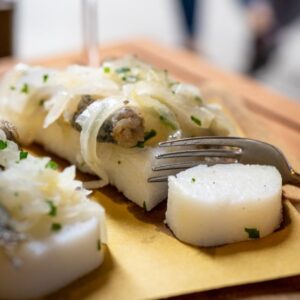
Sarde in Saor
Italians enjoy coffee several times throughout the day. This includes an afternoon pick-me-up and a treat after dinner (after dessert). They just don’t drink cappuccinos after 11 am. At coffee bars, order your caffè (espresso shot) at the counter (al banco) and sip it standing up.Regions
Africa | Antarctica | Asia | Australia | Europe | Middle East | North America | South America